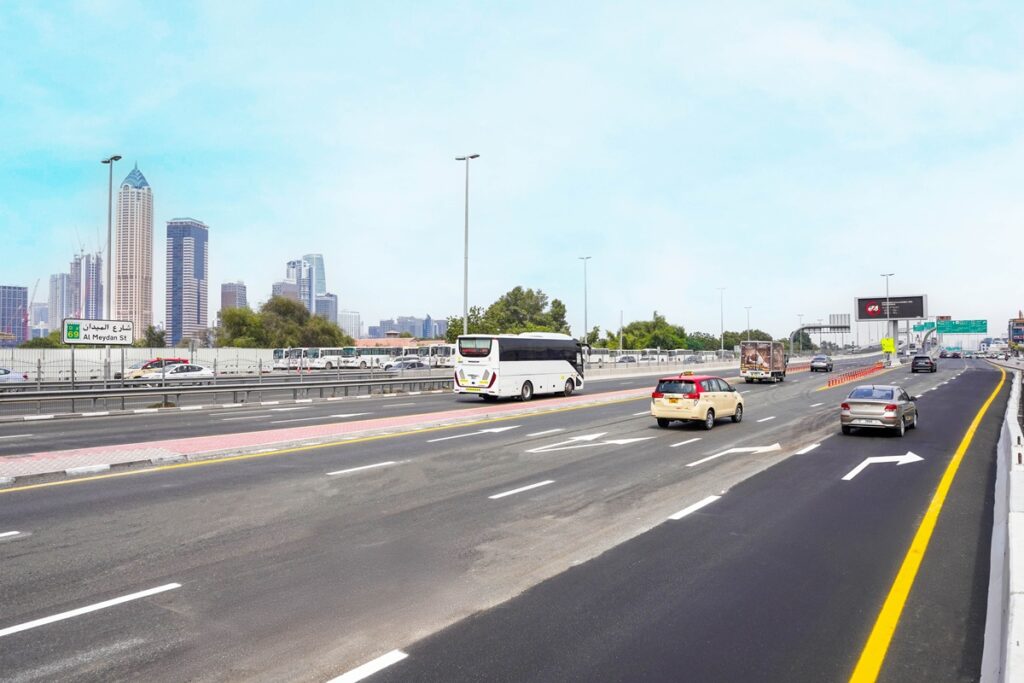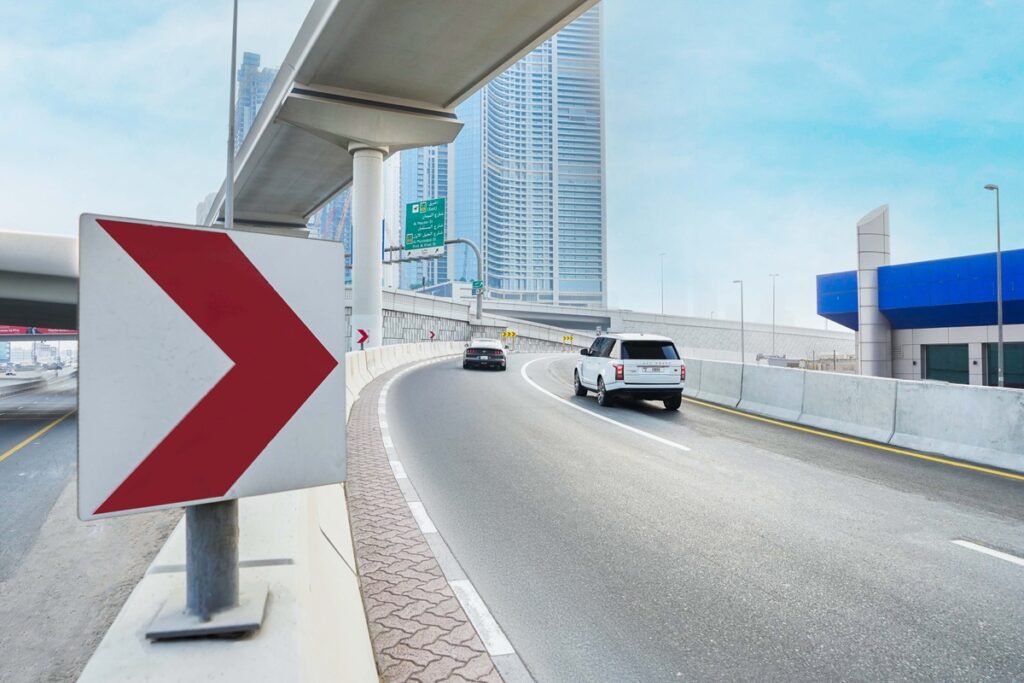Dubai road upgrades have once again shown the city’s commitment to building a smarter, safer, and more efficient transportation system. The Roads and Transport Authority (RTA) has completed a series of major improvements that successfully cut traffic congestion by 40% between two of Dubai’s busiest highways Sheikh Zayed Road and Al Khail Road.
The ambitious project included new bridges, expanded intersections, advanced traffic control systems, and additional service roads. The goal is to make daily commutes easier and faster for millions of drivers, and to further establish Dubai as a global leader in modern infrastructure and smart mobility.
Why Dubai needed these major road upgrades
Dubai is one of the fastest-growing cities in the world. With a booming population, thriving businesses, and countless tourist attractions, its roads are always busy. The corridor between Sheikh Zayed Road and Al Khail Road is one of the most important and heavily used. It connects business districts, shopping areas, and residential neighborhoods.

In recent years, traffic congestion in this area had become a major problem. Long delays, higher fuel use, increased stress levels, and a higher risk of accidents were common. The Dubai road upgrades were designed to solve these challenges, improve travel times, lower emissions, and make driving safer for everyone.
Key components of the Dubai road upgrades

The Dubai road upgrades project went far beyond simple road widening. It included a complete redesign of the corridor to ensure long-term benefits. Major improvements included:

Widening main roads and service lanes to handle more vehicles and reduce bottlenecks.
New flyovers and bridges to allow smoother flow of vehicles without stopping at intersections.
Redesigned entry and exit ramps to help drivers enter and leave highways more safely.
Advanced smart traffic management systems with real-time monitoring and adaptive traffic signals.
Improved pedestrian and cycling facilities, encouraging people to use eco-friendly travel options.
Thanks to these upgrades, drivers now experience a much smoother journey, saving up to 20 minutes in travel time during peak hours.
Positive impact on daily commutes
The most immediate benefit of the Dubai road upgrades is the dramatic cut in travel times. Drivers who once spent up to an hour on the road between Sheikh Zayed and Al Khail now reach their destinations in almost half the time.
For example, a commuter traveling from Business Bay to Dubai Internet City now enjoys a faster and more comfortable trip, often saving 15 to 25 minutes during rush hour. Taxi drivers, delivery drivers, and ride-sharing services have also seen big improvements. Shorter travel times mean they can serve more customers and complete more trips each day, boosting their income and improving customer satisfaction.
Moreover, with smoother traffic, cars spend less time idling, leading to lower fuel consumption and reduced air pollution. This supports Dubai’s long-term sustainability goals and improves overall air quality.
Enhanced road safety through smart design
Safety was a major priority in the Dubai road upgrades. With fewer merging points and better traffic flow, the risk of accidents has been greatly reduced. Smart surveillance cameras and intelligent traffic lights allow quicker responses to incidents, helping keep drivers and passengers safe.
New pedestrian bridges and safe crossings mean people can now walk across these busy roads without risk, encouraging walking and cycling in a city traditionally dominated by cars.
Electronic signboards also give real-time traffic updates, alerting drivers about congestion, alternative routes, and road closures. This technology helps reduce sudden braking and dangerous lane changes, making the roads safer for everyone.
Economic and environmental benefits
Beyond making life easier for drivers, the Dubai road upgrades have delivered major economic benefits. Businesses save time and money on deliveries and logistics. With faster deliveries, retailers and e-commerce companies can serve their customers more efficiently. Employees arrive at work faster and less stressed, leading to higher productivity.
The environment also wins. With smoother traffic flow, there are fewer emissions from cars stuck in traffic. Less noise pollution further improves the quality of life in surrounding neighborhoods. The Dubai government has ambitious targets to reduce its carbon footprint, and these upgrades are a critical part of that strategy.
Supporting Dubai’s vision for the future
The Dubai road upgrades support the Dubai 2040 Urban Master Plan, which focuses on sustainability, quality of life, and making the city the best place to live and visit. The RTA is dedicated to transforming Dubai into a city where transportation is safe, seamless, and accessible for everyone.
In addition to these road improvements, Dubai continues to invest in expanding public transport systems like the metro, buses, and water taxis. The goal is to create a fully integrated, smart mobility network that makes it easy for residents and tourists to get around without relying only on private cars.
Community feedback on the Dubai road upgrades
Public reaction to the Dubai road upgrades has been overwhelmingly positive. Many residents have shared their experiences online, describing how their daily commutes have improved.
A resident from Jumeirah shared, “I used to dread the morning drive to work, but now it feels so much easier. I reach on time, and I’m less tired and stressed.”

A delivery company manager noted, “We have seen a major improvement in our delivery schedules. Our drivers can make more trips in a day, and we are saving on fuel and vehicle maintenance costs.”
Taxi drivers, bus drivers, and other professional drivers have echoed similar sentiments. Environmental organizations have also supported the project, highlighting the benefits of reduced emissions and improved urban air quality.
Looking ahead: What’s next for Dubai’s roads?
Although the Dubai road upgrades have already made a big difference, RTA has no plans to slow down. Future projects are in the pipeline to upgrade more critical corridors, including those linking Dubai Silicon Oasis, Dubai Marina, and other fast-growing neighborhoods.
Dubai is also exploring even more advanced smart technologies, including AI-driven traffic control, electric vehicle charging infrastructure, and more cycling and pedestrian-friendly zones.
By investing in these projects, Dubai aims to stay ahead of the curve as a global smart city, creating a transportation system that is efficient, safe, and sustainable for generations to come.
Conclusion: A big step forward for Dubai mobility
The Dubai road upgrades between Sheikh Zayed Road and Al Khail Road are a major milestone in the city’s journey to become a global leader in smart, safe, and sustainable transport. Cutting traffic congestion by 40% is an impressive achievement that makes life easier for millions of drivers and supports Dubai’s broader environmental and economic goals.
These improvements reflect Dubai’s vision for a modern city where roads are not just about moving cars, but about connecting people and creating a higher quality of life. Whether you’re a daily commuter, a business owner, or a tourist, these upgrades promise a faster, safer, and more enjoyable experience on Dubai’s roads.
Dubai’s journey is far from over, and the future of its roads looks brighter than ever.
Do follow UAE Stories on Instagram
Read More: YAS WATERWORLD EXPANSION OVER 20 NEW RIDES UNVEILED IN ABU DHABI














